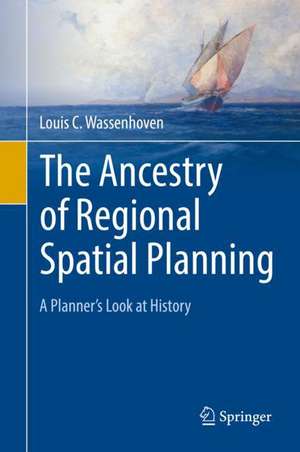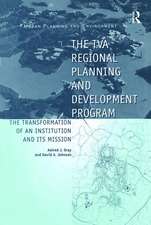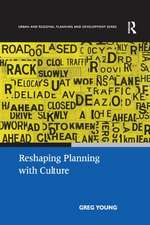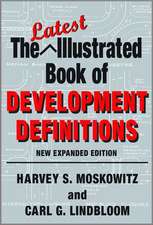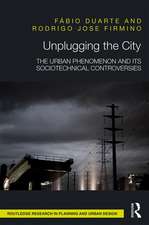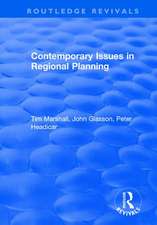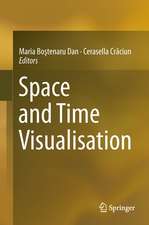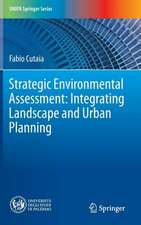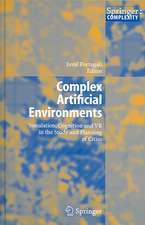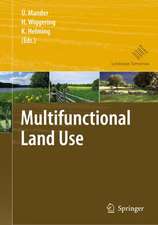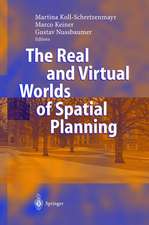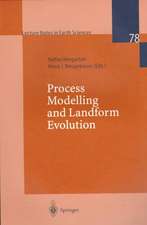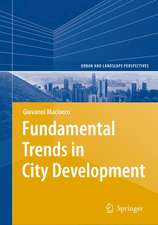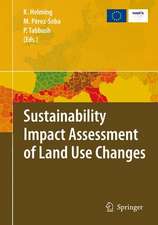The Ancestry of Regional Spatial Planning: A Planner’s Look at History
Autor Louis C. Wassenhovenen Limba Engleză Hardback – 4 oct 2018
The book will attract a broad range of readers because of its approach and its wide coverage of historical periods and world regions. Although Europe is the main focus, the book contains material on all continents and all periods, the ancient world, the medieval age and the modern era. The history of Urban Planning is taught and researched widely, but the history, or pre-history, before the twentieth century, of Regional Spatial Planning is not. This book will fill that vacuum.
| Toate formatele și edițiile | Preț | Express |
|---|---|---|
| Paperback (1) | 721.72 lei 38-44 zile | |
| Springer International Publishing – 3 ian 2019 | 721.72 lei 38-44 zile | |
| Hardback (1) | 562.98 lei 38-44 zile | |
| Springer International Publishing – 4 oct 2018 | 562.98 lei 38-44 zile |
Preț: 562.98 lei
Preț vechi: 695.04 lei
-19% Nou
Puncte Express: 844
Preț estimativ în valută:
107.74€ • 116.99$ • 90.50£
107.74€ • 116.99$ • 90.50£
Carte tipărită la comandă
Livrare economică 19-25 aprilie
Preluare comenzi: 021 569.72.76
Specificații
ISBN-13: 9783319969947
ISBN-10: 3319969943
Pagini: 271
Ilustrații: XXIII, 249 p. 15 illus., 13 illus. in color.
Dimensiuni: 155 x 235 mm
Ediția:1st ed. 2019
Editura: Springer International Publishing
Colecția Springer
Locul publicării:Cham, Switzerland
ISBN-10: 3319969943
Pagini: 271
Ilustrații: XXIII, 249 p. 15 illus., 13 illus. in color.
Dimensiuni: 155 x 235 mm
Ediția:1st ed. 2019
Editura: Springer International Publishing
Colecția Springer
Locul publicării:Cham, Switzerland
Cuprins
Preface .- Ch.1. Introduction (Looking for the origins of regional spatial planning – Short presentation of chapters – Appendix on regional planning in the interwar period).- PART I (Chapters 2-11) .- Ch.2. Historical periods, regions and examples .- Ch. 3. Greek colonization.- Ch. 4. Colonies and towns in the Hellenistic, Roman and Byzantine Empires .- Ch. 5. New capitals.- Ch. 6. Middle Ages and Modern Era: Towns and planned settlements.- Ch. 7. Land: Empires and ancient world.- Ch. 8. Land: Medieval period and Modern Era.- Ch. 9. Government, territorial organization and decision structures .- Ch. 10. Trade, industry and natural resources.- Ch. 11. Transport, infrastructures and fortifications.- Ch. 12. Parameters of analysis .- PART II .- Ch. 13. Planning “actors”, government and regions.- Ch. 14. Planning process: Means and survey.- Ch. 15. Population re-distribution and spatial re-structuring.- Ch. 16. Towns and urban networks .- Ch. 17. Land, natural resources andinnovations.- Ch. 18. Networks, flows, trade and interconnected areal units.- Ch. 19. Long-run change and future prospects: Closing statement .- Bibliography.- Index.
Recenzii
“This impressive original book bridges a major gap in literature on planning history and indeed prehistory, when planning was not even named yet as an activity or discipline. … Louis Wassenhoven thus offers a mesmerizing account on the ancestry of regional spatial planning even before it was named, but also a forceful statement on the functions of history as past and its importance in forecasting the future, or rather our multiple futures.” (Lila Leontidou, European Planning Studies, Vol. 28 (12), 2020)
Notă biografică
Louis C. Wassenhoven is Professor Emeritus (Urban and Regional Planning), National Technical University of Athens (NTUA). He holds a PhD from the London School of Economics and Political Science (University of London), a Postgraduate Diploma in Planning from the Architectural Association School of Architecture (London), an MA in Architecture (NTUA) and a Certificate in Town Planning (Ministry of Housing, France). Apart from his career at NTUA, where he was the director of the Laboratory of Regional Planning and Urban Development, he has taught as Lecturer and then Senior Lecturer at the Development Planning Unit, Bartlett School of Architecture and Planning (University College London) and as visiting teacher in other universities. He has served as chairman of the Greek National Council of Spatial Planning and Sustainable Development, as chairman of the Steering Committee of the Joint Activity on Urban Management of OECD, as vice-chairman of the Greek State Scholarships Foundation, as member of the board of the company Hellinikon s.a. (Management and Redevelopment of the site of the former Athens international airport), and as member of the council of the Technical University of Crete. He is a past member of the British Royal Town Planning Institute and a member of the Association of Greek Urban and Regional Planners. He is the author of two books (in Greek) on Territorial Governance and Maritime Spatial Planning and of a number of articles and papers in Greek or English. He wrote the volume on Greece of the EU Compendium of Spatial Planning Systems and Policies..
Textul de pe ultima copertă
This book is not a historical or archaeological treatise, but rather a study in which the author looks at the past, not as a historian, but as a planner who has the ambition to unravel the early manifestations of his discipline; a discipline which did not exist as such in remote periods, but the ingredients of which were nevertheless present. The author has observed the past equipped with knowledge and understanding of what regional planning was in the second half of the twentieth century and still is. He stands in the period of the first decades after the Second World War, which were the formative years of regional planning, and looks back at bygone ages. He discusses ideas and literature from the immediate post-war period in order to examine the ancestry of regional planning through their lens.
The book will attract a broad range of readers because of its approach and its wide coverage of historical periods and world regions. Although Europe is the main focus, the book contains material on all continents and all periods, the ancient world, the medieval age and the modern era. The history of Urban Planning is taught and researched widely, but the history, or pre-history, before the twentieth century, of Regional Spatial Planning is not. This book will fill that vacuum.
Caracteristici
Provides insights from a planner’s perspective on the history of regional planning Explores past traditions and examines tools still used by modern planners Presents a retrospect view of planning from post Second World War
